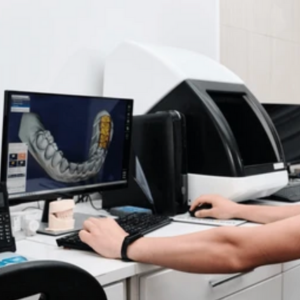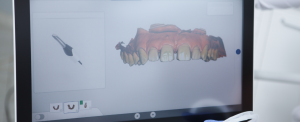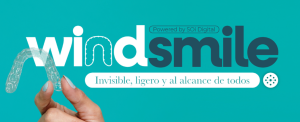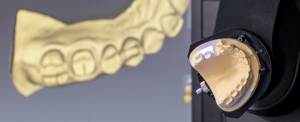In modern digital dentistry, the precision of a CAD (Computer Assisted Design) design is crucial to ensuring the quality of the restorations and devices that are manufactured. The correct execution of a design not only affects the fit, but also the aesthetics, functionality and durability of the prosthesis. For dental laboratory technicians, it is essential to have a set of clear technical criteria to evaluate the quality of the designs they receive, ensuring that they meet the highest standards of the profession.
Fit and compatibility: the pillar of precision

One of the first elements that must be evaluated in a dental CAD design is its fit and compatibility with the working model. Marginal adjustment is essential to ensure that the restoration adapts perfectly to the patient’s oral cavity, without premature contact points or overloads in specific areas. Laboratory technicians must accurately verify the design margins using specialized software that allows micron tolerances to be measured. Scanning tools, combined with digital adjustment analysis, are indispensable at this stage to prevent errors that can lead to poor adjustment.
On the other hand, it is essential to ensure that the design is fully compatible with the digital work model, usually stored in STL (Standard Tessellation Language) format. This format allows for detailed three-dimensional representation, and any discrepancy between the scanned model and the CAD design can compromise the final restoration. The laboratory technician must perform exhaustive reviews to identify possible mismatches and rectify them before advancing to the manufacturing stage.
Aesthetics and functionality: beyond technique
In dental CAD designs, aesthetics plays an important role, particularly in visible restorations. The laboratory technician must evaluate how the design is integrated into the patient’s dental arch, ensuring that the size, shape and translucency are adequate to obtain a natural result. It is not enough for the design to be functional; the aesthetic expectation must also be met. In that sense, digital simulations offer an excellent tool to preview the final result in terms of color and texture, allowing adjustments to be made before production.
In terms of functionality, the design must guarantee correct occlusal contact and allow fluid mandibular movements. To do this, the CAD software can perform simulations of occlusion and masticatory movements, identifying possible interference or excessive contacts that could compromise the comfort and durability of the restoration. Occlusal analysis and correct functional alignment of the design are essential to avoid overloads that may cause premature wear or fractures in the restoration.
Dimensional tolerances and adaptation to the material
Another key technical aspect in the evaluation of a dental CAD design is the review of dimensional tolerances. Each type of restoration has specific requirements in terms of thickness and size that must be rigorously met; if the design exceeds or falls short of these tolerances, the restoration may require manual adjustments that increase costs and production times. In this line, laboratory technicians must use precise digital measurement tools, such as 3D scanners and dimensional analysis software, to ensure that the design respects the tolerances stipulated by the type of restoration.
Likewise, the design must be optimized for the material to be used. Different dental materials, such as ceramic, metal or composite resin, have physical properties that influence the minimum thickness and geometry of the design. For example, ceramic needs sufficient thickness to ensure fracture resistance, while metal may require less thickness. The laboratory technician must ensure that the design not only meets the aesthetic and functional expectations, but also the structural requirements of the material to be used.
Structural strength and distribution of forces
The analysis of the internal structure of the design is another crucial aspect. A design that does not distribute the masticatory forces evenly can cause points of tension that compromise the integrity of the restoration in the long term. For this reason, laboratory technicians must carry out structural analysis that simulates the load conditions to which the restoration will be exposed. Finite element analysis techniques allow you to predict how the design will behave under different forces, which is essential to adjust the geometry and avoid fractures or deformations.
In addition, the thickness of the restoration walls must be carefully evaluated. If the walls are too thin, there is a risk that the restoration will be fragile, especially in areas of high impact or wear. On the other hand, excessive thickness can make it difficult to adjust or interfere with aesthetics and functionality. The balance between resistance and aesthetics is delicate, and the design must be optimized for both factors.
Digital validation and constant feedback
Once all these aspects have been evaluated, it is necessary to carry out a complete validation of the design. Digital simulations allow you to predict possible design failures or problems before manufacturing, including adjustment tests, occlusion analysis and resistance studies under load, which allows fine adjustments without the need to physically produce the restoration.
From this perspective, a good workflow between laboratory technician and dental CAD design provider implies a continuous feedback process.



